Table Of Content
No-code and low-code platforms are making it easier for anyone to bring an idea to life. Instead of spending months learning to code or waiting for a development team, people can now create apps, websites, and tools in a fraction of the time.
What once felt out of reach is now something a small team, or even one person, can build over a weekend. Small businesses are using these tools to get their ideas off the ground quickly, while larger companies use them to solve everyday problems and try out new ideas without a big investment.
The appeal is simple: less waiting, less complexity, and more room to experiment. The numbers ahead show just how popular these platforms have become, and why they’re becoming a common choice for building in today’s fast-moving world.
No Code & Low Code Market Growth
The global no-code and low-code market reached $29.4 billion in 2025, up from $25.1 billion in 2024.
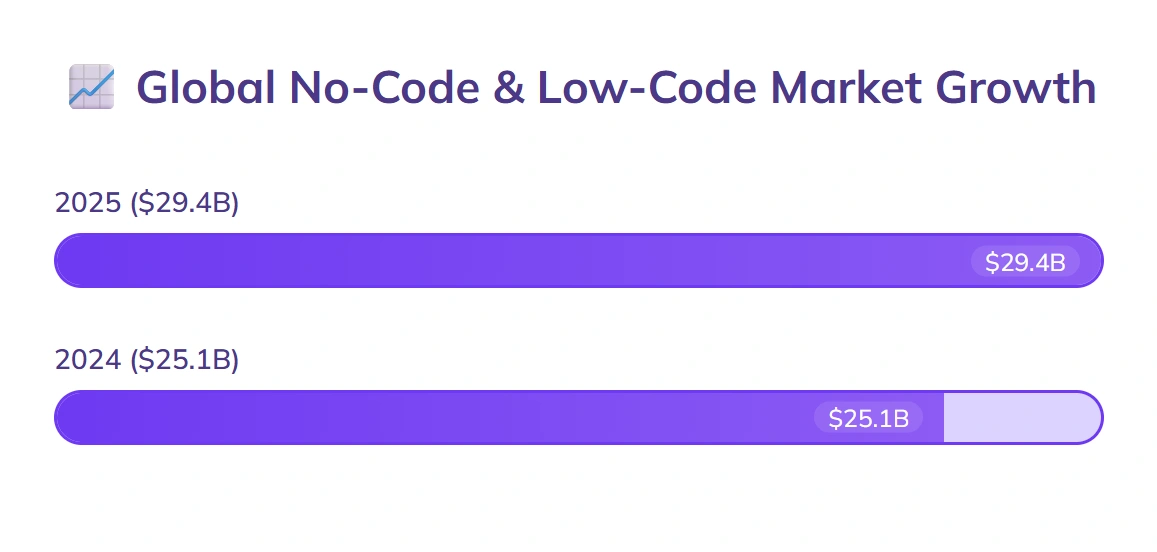
No-code platforms accounted for 46% of the overall low-code and no-code market share in 2025.
Enterprise-level spending on no-code and low-code solutions grew by 18% year-over-year in 2025.
62% of new app development projects in 2025 used at least some no-code or low-code components.
Small and medium-sized businesses made up 37% of all market spending on these platforms in 2025.
The Asia-Pacific region saw a 21% increase in no-code and low-code adoption from 2024 to 2025.
The top five vendors accounted for 54% of total market revenue in 2025.
Subscription-based licensing models represented 78% of all platform revenue in 2025.
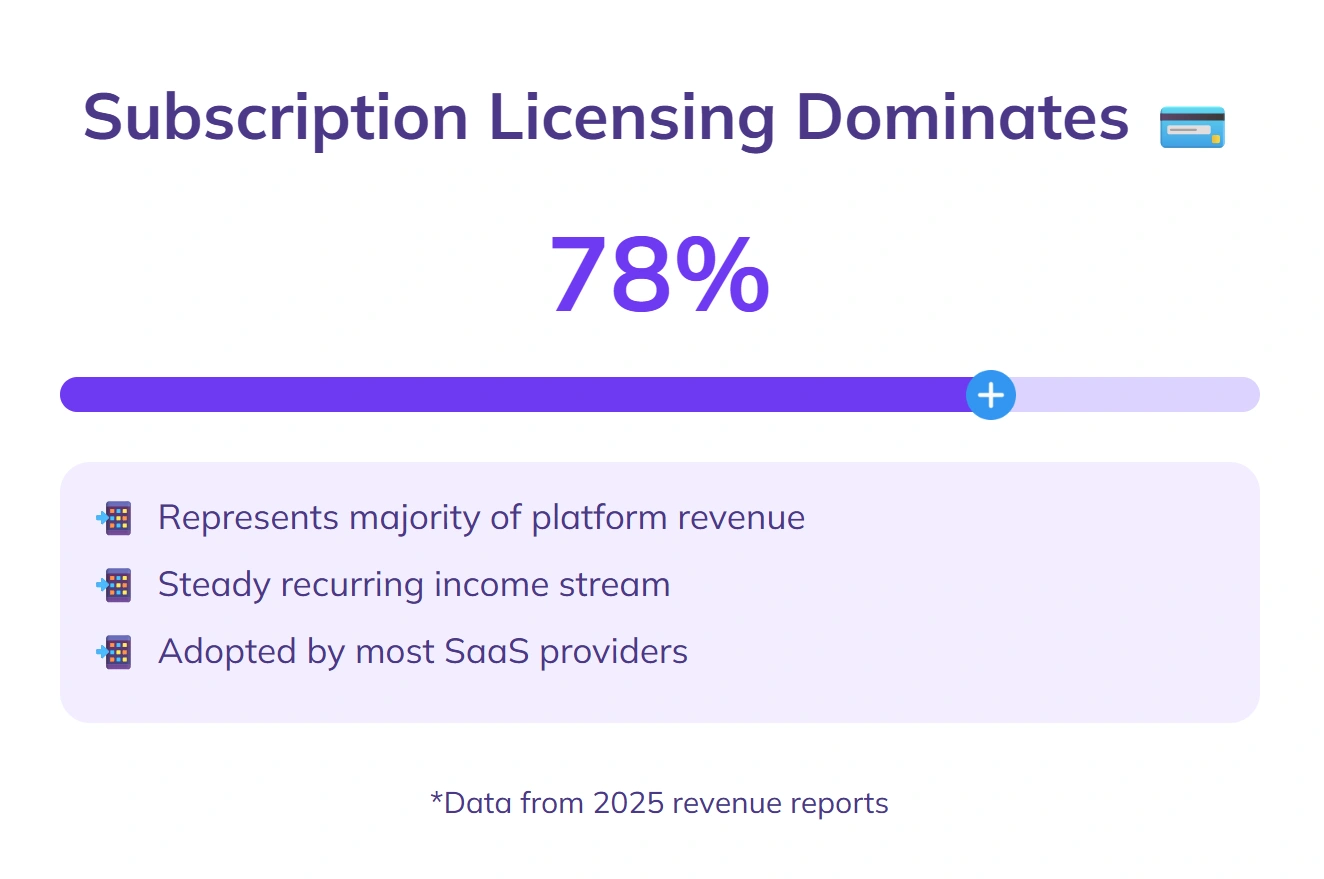
Industry analysts recorded 9,800 new no-code and low-code startups globally in the past 12 months.
Government and public sector usage contributed to 11% of total market spending in 2025.
Adoption Across Industries and Teams
In 2025, 73% of financial services firms reported using no-code or low-code tools in at least one department, compared to 59% in 2023.
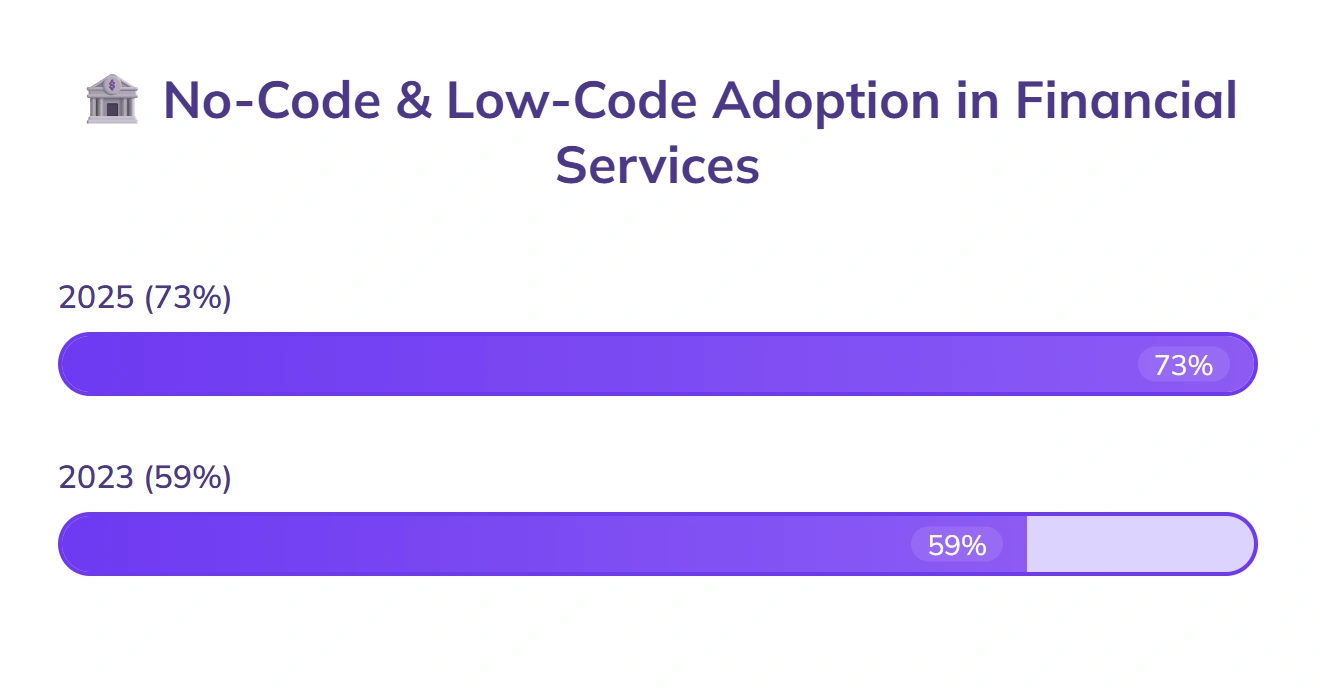
Manufacturing companies increased adoption by 19% from 2024 to 2025.
68% of healthcare providers use no-code or low-code platforms for patient scheduling, reporting, or data dashboards.
Marketing teams are the most frequent departmental users, with 81% leveraging no-code or low-code for campaign tracking and automation.
HR departments in mid-to-large companies report 52% adoption for onboarding, employee portals, and performance tracking tools.
The retail sector accounts for 14% of total industry-wide spending on no-code and low-code solutions in 2025.
Cross-functional project teams using these platforms grew by 27% over the past year, rising from 33% to 42% of all teams.
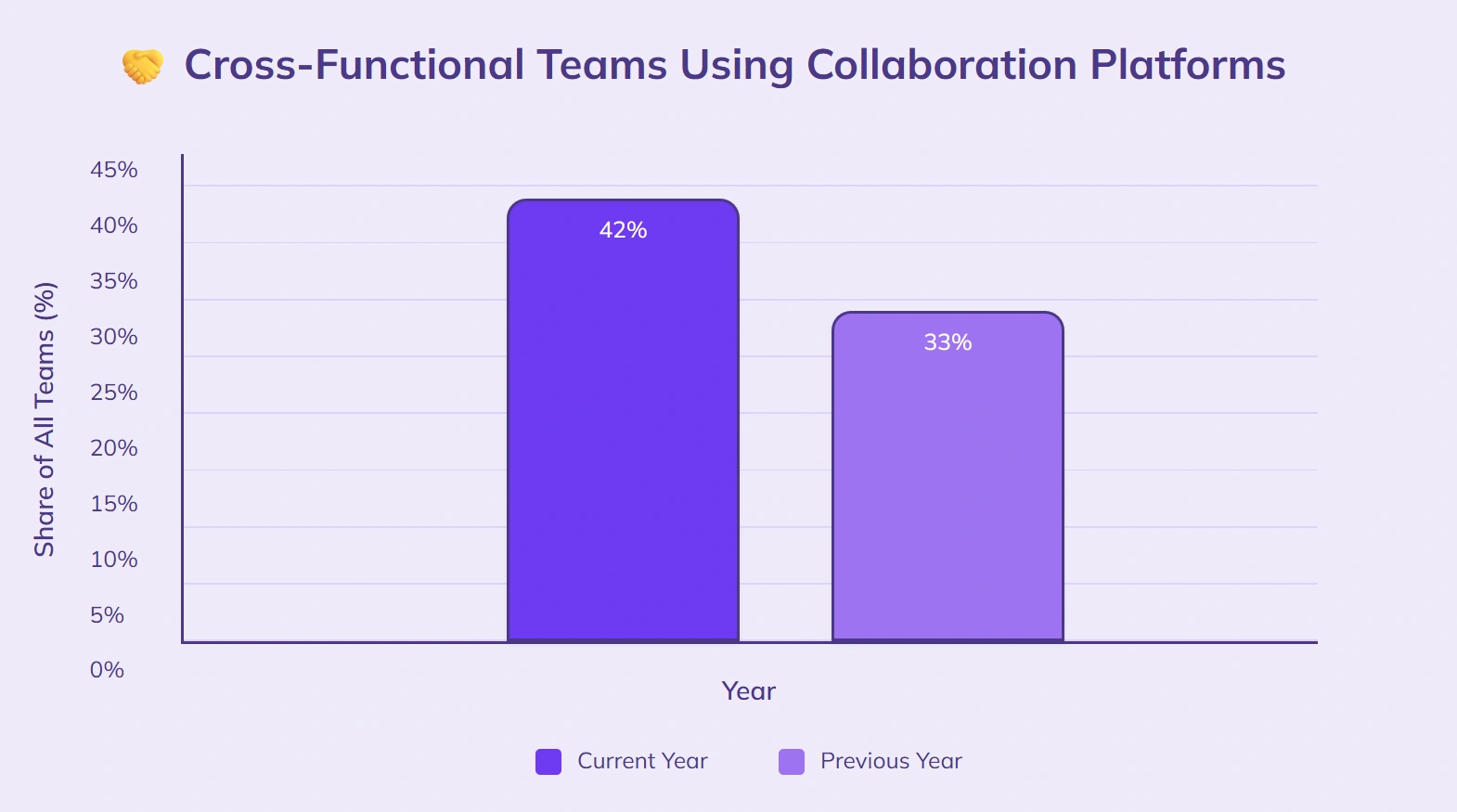
Education sector adoption reached 61%, driven by e-learning platform creation and internal admin tools.
Government agencies in 2025 used no-code or low-code in 39% of their digital services projects.
44% of IT departments now actively encourage business users to develop applications using no-code and low-code platforms.
Productivity and Time Savings
Teams using no-code and low-code platforms complete projects in an average of 7.4 weeks, compared to 12.1 weeks for traditional development.

Developers report spending 28% less time on repetitive coding tasks when supported by no-code or low-code tools.
61% of business users say they can now build simple applications without waiting for IT assistance.
No-code and low-code adoption has reduced the average time from concept to launch by 42% in organizations that use them extensively.
Cross-department workflows are automated 33% faster with these platforms than with custom-coded solutions.
49% of companies using no-code or low-code have shortened internal approval processes for app deployment.
Teams deliver 2.3 times more prototypes per quarter after integrating no-code or low-code tools.
54% of IT leaders say these platforms free up technical staff to focus on higher-priority projects.
Onboarding new team members to these tools takes an average of 4.1 days, compared to 9.6 days for traditional development environments.
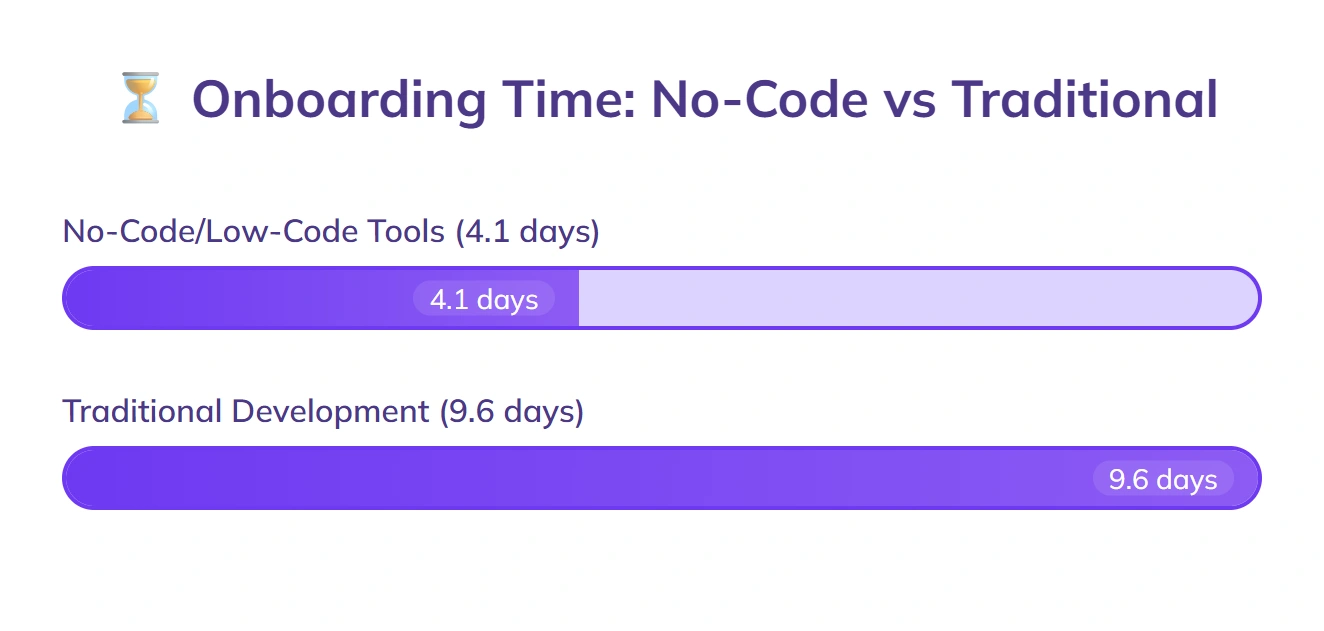
Popular Tools and Platform Usage
In 2025, 36% of organizations using no-code or low-code platforms listed Microsoft Power Apps as their primary tool, compared to 31% in 2023.
OutSystems is the preferred choice for 22% of enterprise-level users.
41% of startups rely on Bubble for building customer-facing applications.
Webflow usage among design-focused teams stands at 27%.
Airtable is used by 34% of marketing teams for campaign tracking and automation.
AppSheet adoption among small and medium-sized businesses reached 19% in 2025.
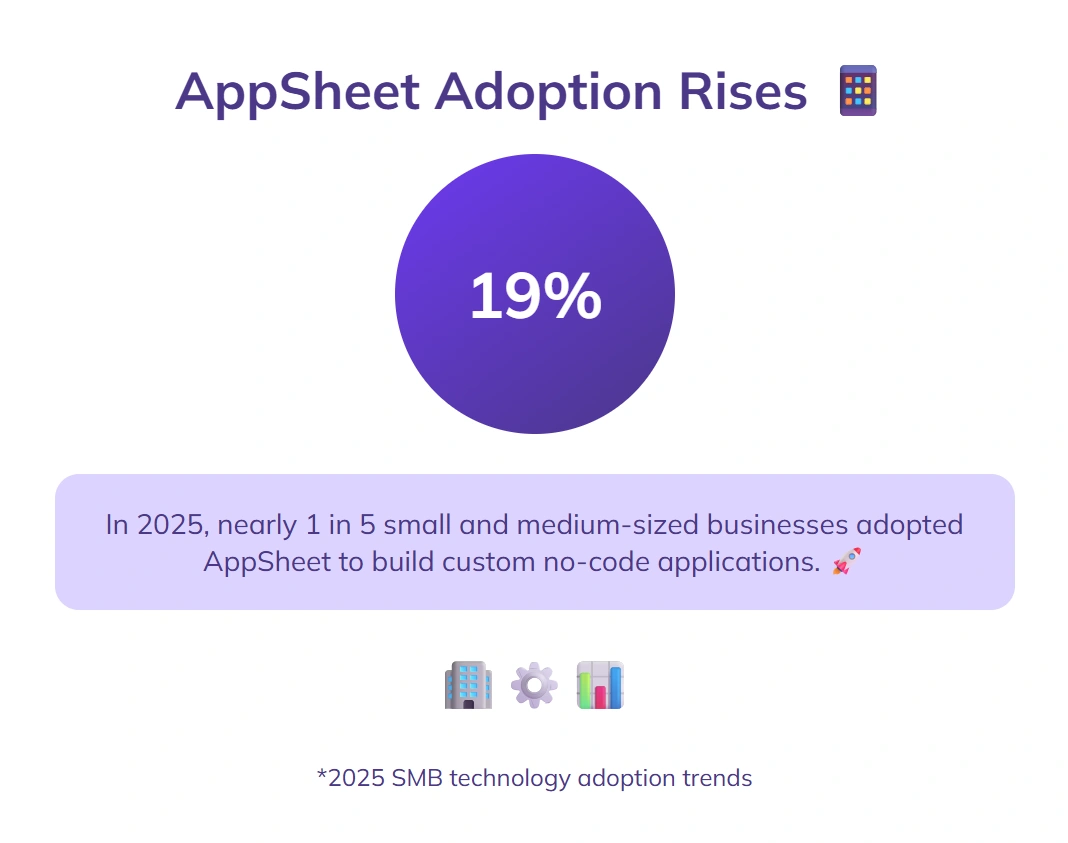
29% of cross-functional project teams use Mendix for internal workflow tools.
Zoho Creator is the main no-code solution for 14% of HR departments.
Glide is the preferred mobile app builder for 11% of education sector projects, up from 8% in 2024.
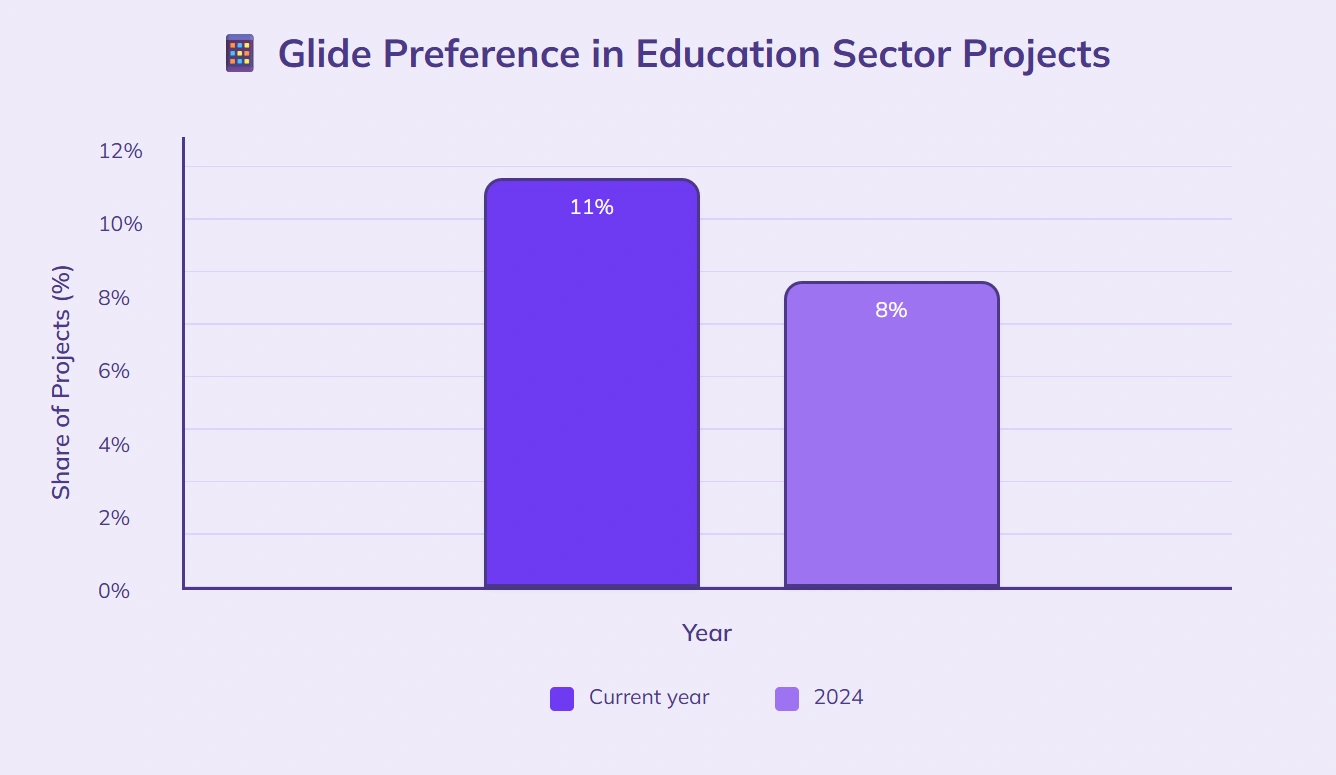
25% of organizations use a combination of at least three different no-code or low-code platforms in their operations.
Challenges, Limitations, and Future Trends
In 2025, 47% of organizations cite integration with legacy systems as their top challenge when using no-code or low-code, compared to 42% in 2023.

39% of IT leaders say governance and compliance are harder to maintain with widespread no-code or low-code adoption.
Limited customization is reported as a barrier by 33% of enterprise users.
28% of developers believe no-code and low-code platforms can lead to long-term scalability issues.

Vendor lock-in concerns affect 31% of organizations using proprietary no-code or low-code solutions.
24% of users experience performance slowdowns when building larger, more complex applications on these platforms.
36% of business users report needing more training to use advanced features effectively.
Security vulnerabilities have been encountered by 14% of companies deploying applications built entirely on no-code or low-code tools.
Platform updates or pricing changes have caused operational disruptions for 18% of users, up from 12% in 2024.
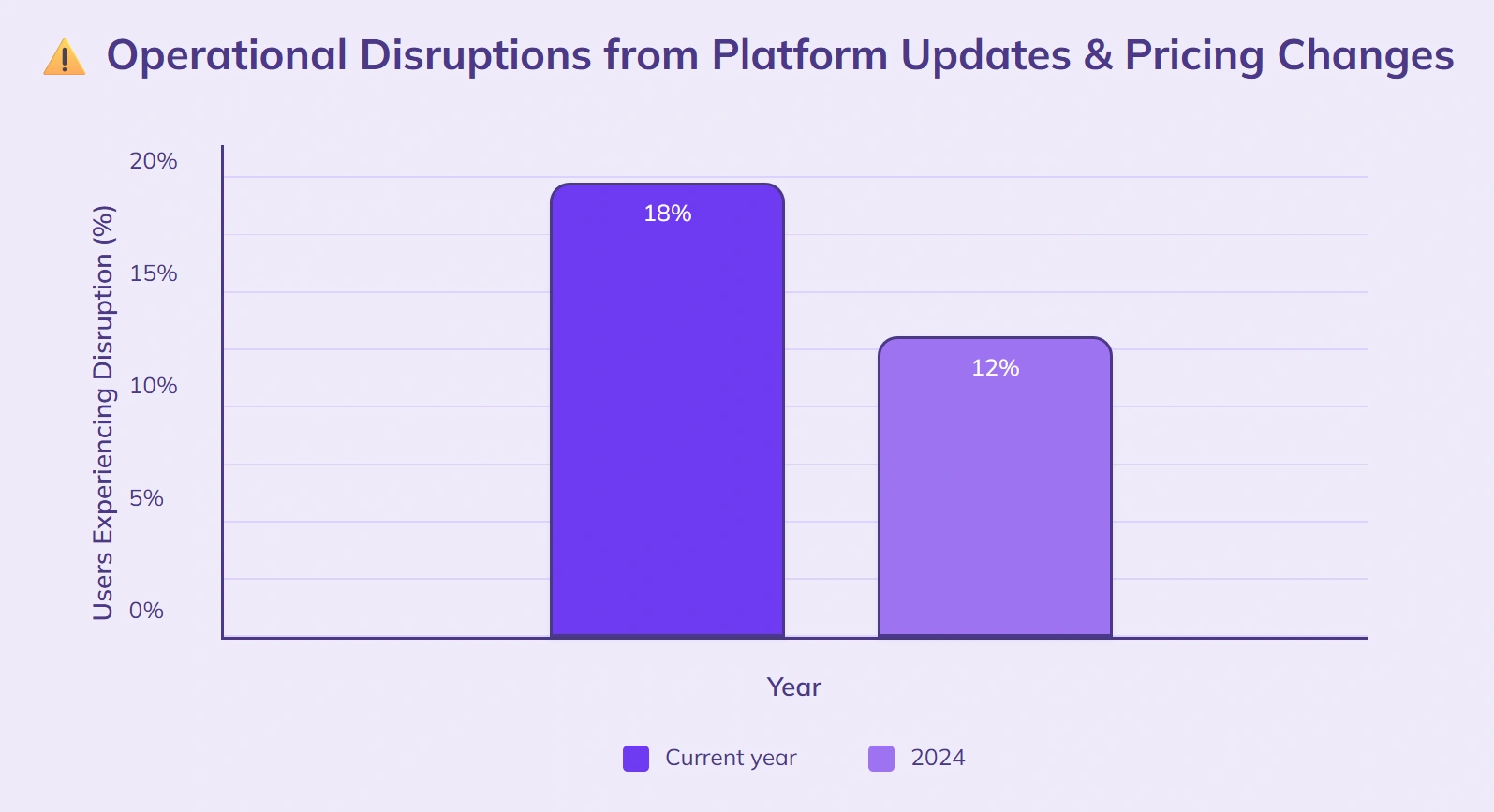
22% of IT departments restrict access to certain no-code or low-code tools to manage risk.
The Bottom Line
No-code and low-code tools have gone from being a niche option to something people are using every day.
The statistics show more people and businesses relying on them, and for good reason; they save time, cut down on costs, and make it easier to try new ideas.
They won’t replace all traditional coding, but they give anyone with an idea a way to make it real without years of technical training. For companies, that means projects move faster.
For individuals, it’s a chance to create without being held back by technical hurdles. These platforms are no longer just about the future of development; they’re part of how things are being built right now.
Create videos 10x faster and easier with Zebracat
Try it now










Comments